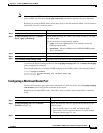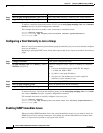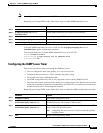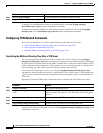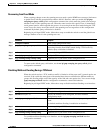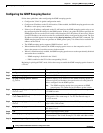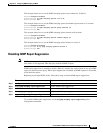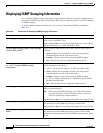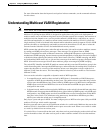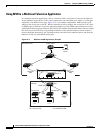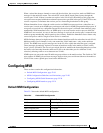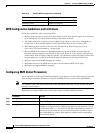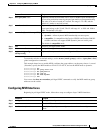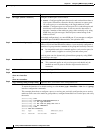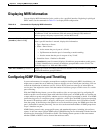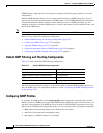
22-17
Catalyst 2960 and 2960-S Switch Software Configuration Guide
OL-8603-09
Chapter 22 Configuring IGMP Snooping and MVR
Understanding Multicast VLAN Registration
For more information about the keywords and options in these commands, see the command reference
for this release.
Understanding Multicast VLAN Registration
Note To use MVR, the switch must be running the LAN Base image.
Multicast VLAN Registration (MVR) is designed for applications using wide-scale deployment of
multicast traffic across an Ethernet ring-based service-provider network (for example, the broadcast of
multiple television channels over a service-provider network). MVR allows a subscriber on a port to
subscribe and unsubscribe to a multicast stream on the network-wide multicast VLAN. It allows the
single multicast VLAN to be shared in the network while subscribers remain in separate VLANs. MVR
provides the ability to continuously send multicast streams in the multicast VLAN, but to isolate the
streams from the subscriber VLANs for bandwidth and security reasons.
MVR assumes that subscriber ports subscribe and unsubscribe (join and leave) these multicast streams
by sending out IGMP join and leave messages. These messages can originate from an IGMP
Version-2-compatible host with an Ethernet connection. Although MVR operates on the underlying
mechanism of IGMP snooping, the two features operate independently of each other. One can be enabled
or disabled without affecting the behavior of the other feature. However, if IGMP snooping and MVR
are both enabled, MVR reacts only to join and leave messages from multicast groups configured under
MVR. Join and leave messages from all other multicast groups are managed by IGMP snooping.
The switch CPU identifies the MVR IP multicast streams and their associated IP multicast group in the
switch forwarding table, intercepts the IGMP messages, and modifies the forwarding table to include or
remove the subscriber as a receiver of the multicast stream, even though the receivers might be in a
different VLAN from the source. This forwarding behavior selectively allows traffic to cross between
different VLANs.
You can set the switch for compatible or dynamic mode of MVR operation:
• In compatible mode, multicast data received by MVR hosts is forwarded to all MVR data ports,
regardless of MVR host membership on those ports. The multicast data is forwarded only to those
receiver ports that MVR hosts have joined, either by IGMP reports or by MVR static configuration.
IGMP reports received from MVR hosts are never forwarded from MVR data ports that were
configured in the switch.
• In dynamic mode, multicast data received by MVR hosts on the switch is forwarded from only those
MVR data and client ports that the MVR hosts have joined, either by IGMP reports or by MVR static
configuration. Any IGMP reports received from MVR hosts are also forwarded from all the MVR
data ports in the switch. This eliminates using unnecessary bandwidth on MVR data port links,
which occurs when the switch runs in compatible mode.
Only Layer 2 ports take part in MVR. You must configure ports as MVR receiver ports. Only one MVR
multicast VLAN per switch stackis supported.
Receiver ports and source ports can be on different switches in a switch stack. Multicast data sent on the
multicast VLAN is forwarded to all MVR receiver ports across the stack. When a new switch is added
to a stack, by default it has no receiver ports.
If a switch fails or is removed from the stack, only those receiver ports belonging to that switch will not
receive the multicast data. All other receiver ports on other switches continue to receive the multicast
data.



